Abstract
The AC electrical impedance of frog skin was measured in the range 1 cycle/second to 50 kc/second by injecting current sinusoidally at low current density. The behavior of the skin was found to be linear so the usual concepts of impedance could be validly employed. In the range 1 cycle/second to 5 kc/second, the impedance traces out a circular arc locus with its center off the real axis; thus the skin could be represented by a series resistance and a parallel combination of a conductance and a phase shift element. The phase shift element has an impedance angle of about 80°, current leading voltage, with an equivalent capacitance of about 2 μf/cm2. The phase shift and the equivalent capacitance were independent of the experimental conditions. The parallel conductance, which was responsible for most of the low frequency impedance, could be subdivided into two approximately equal conductances, one associated with sodium ion current and the other associated with chloride ion current. Both currents were determined mainly by the concentrations of the respective ions bathing the outside of the skin. The response to changes in concentration and the response to CO2 indicated that the chloride current was passive, but the sodium current appeared to be associated with the active transport mechanism; little sodium could pass through the skin unless associated with active transport.
Full text
PDF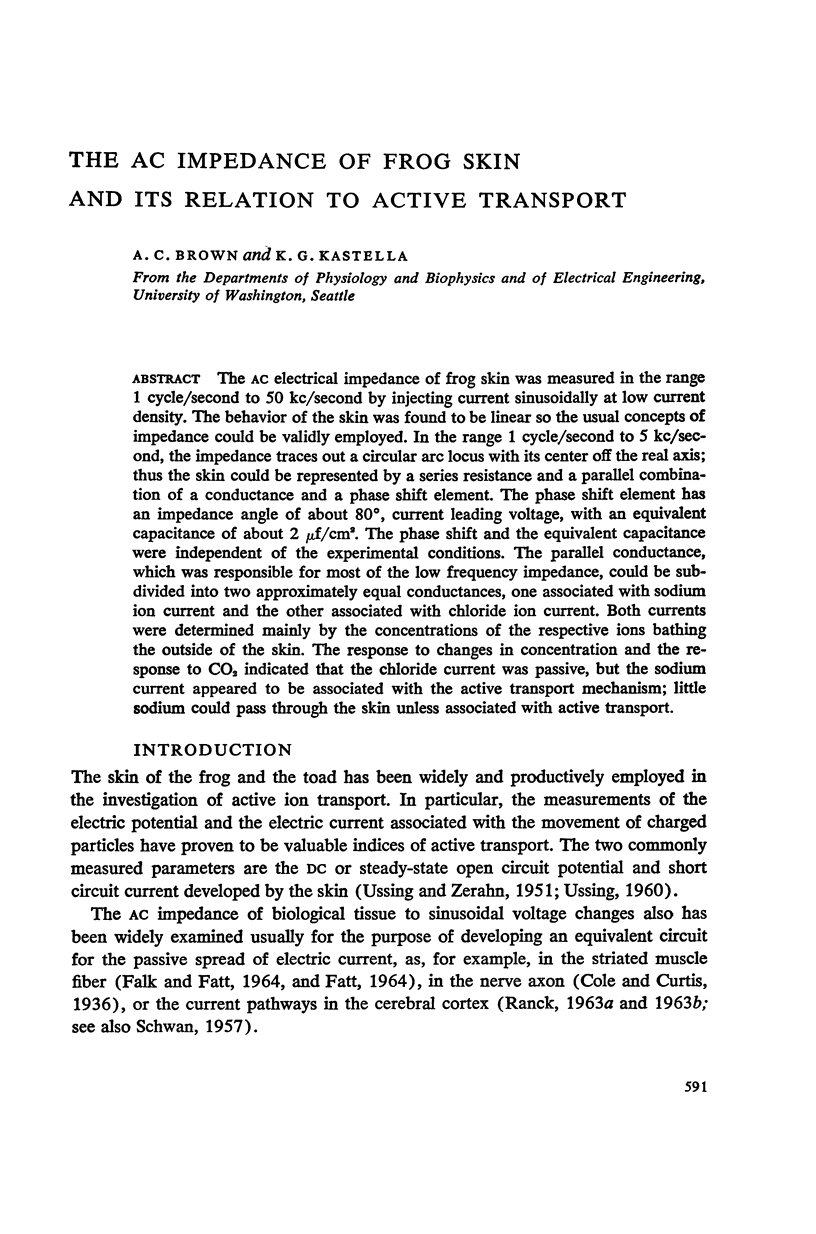
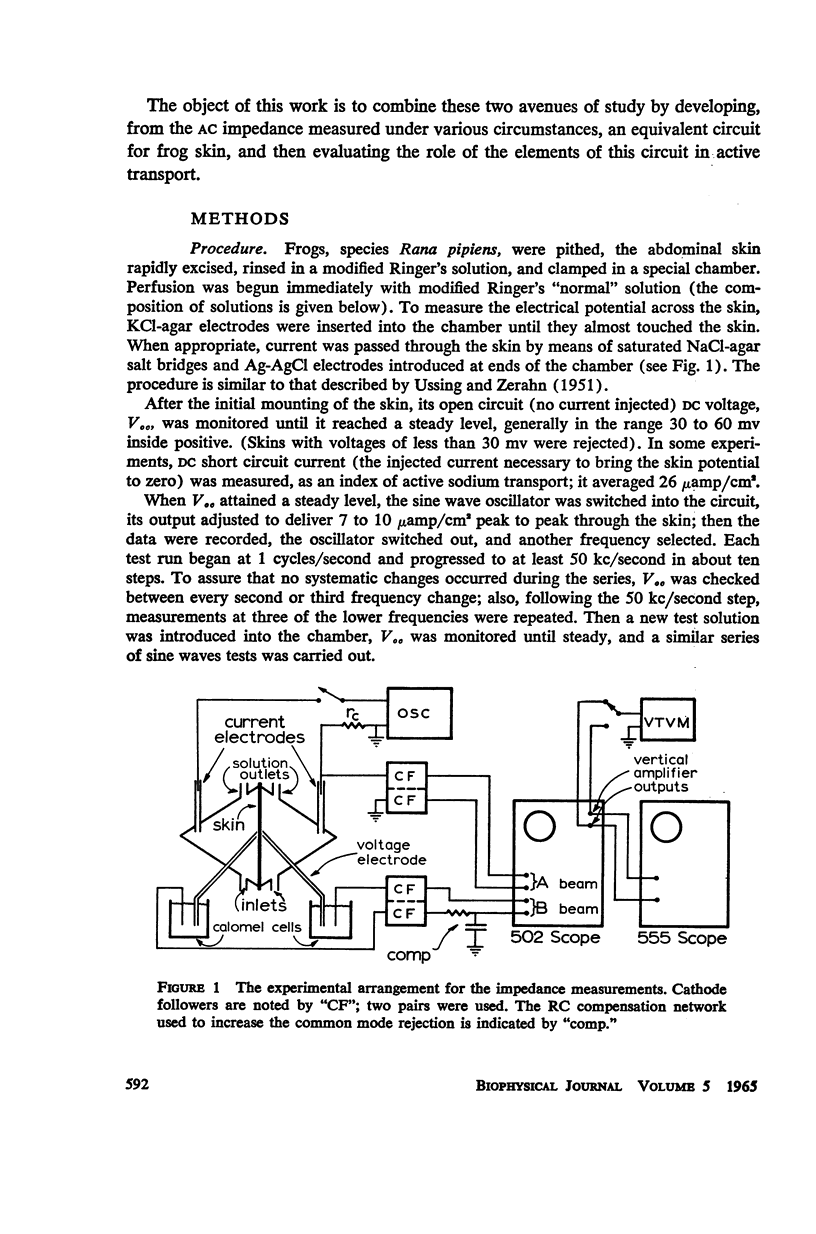
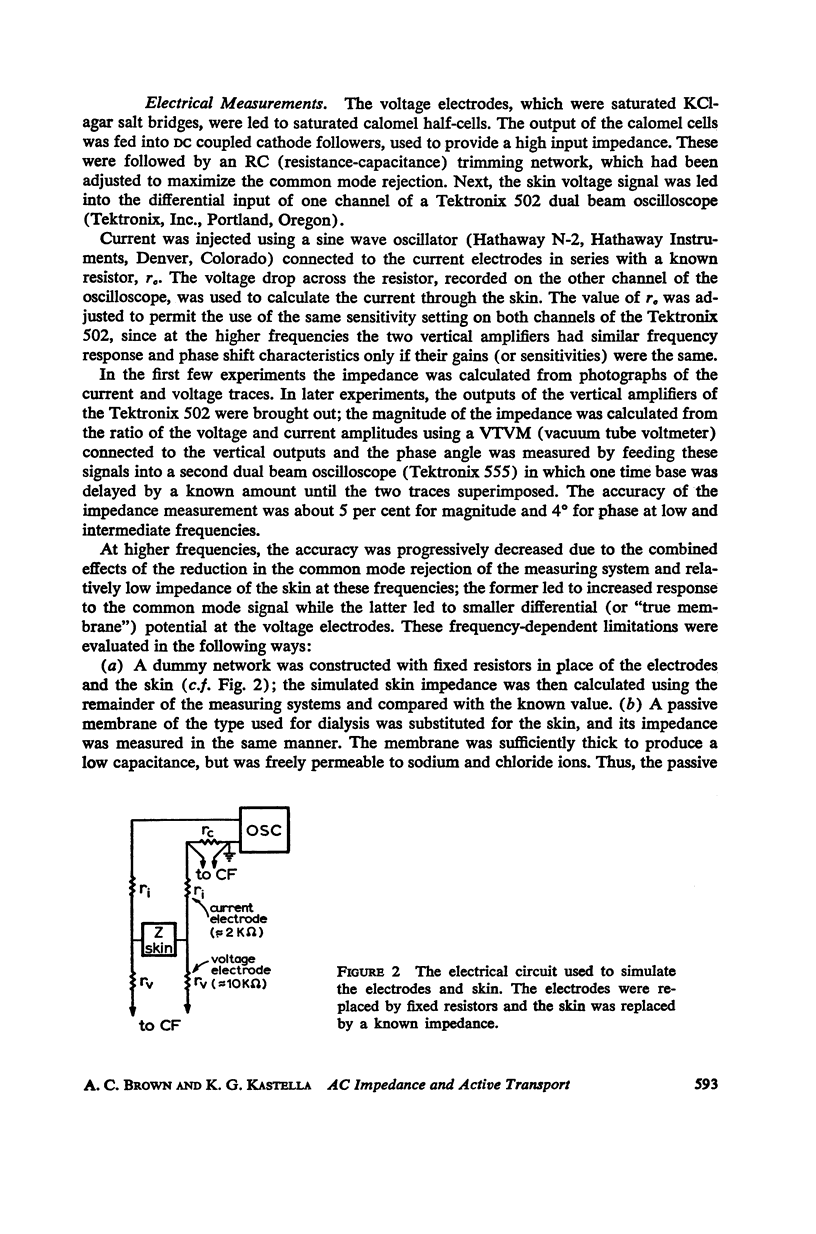
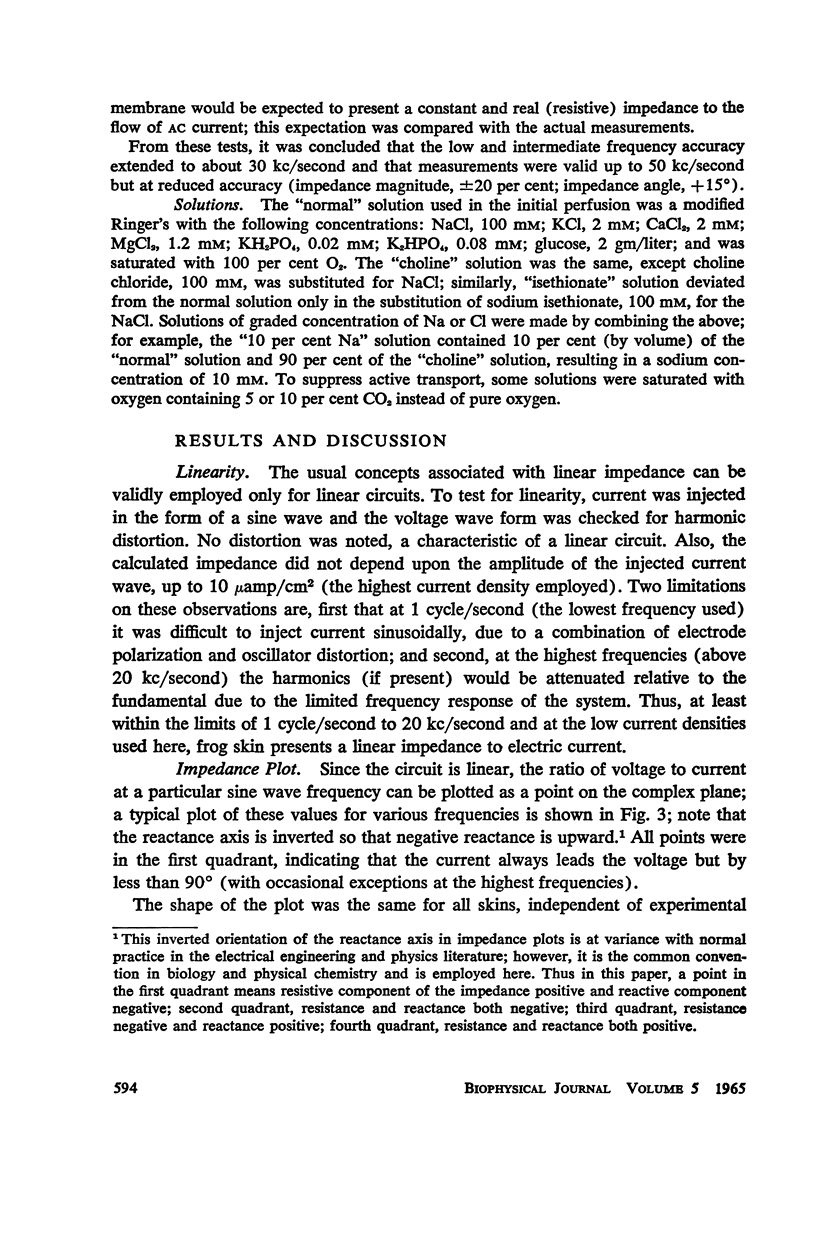


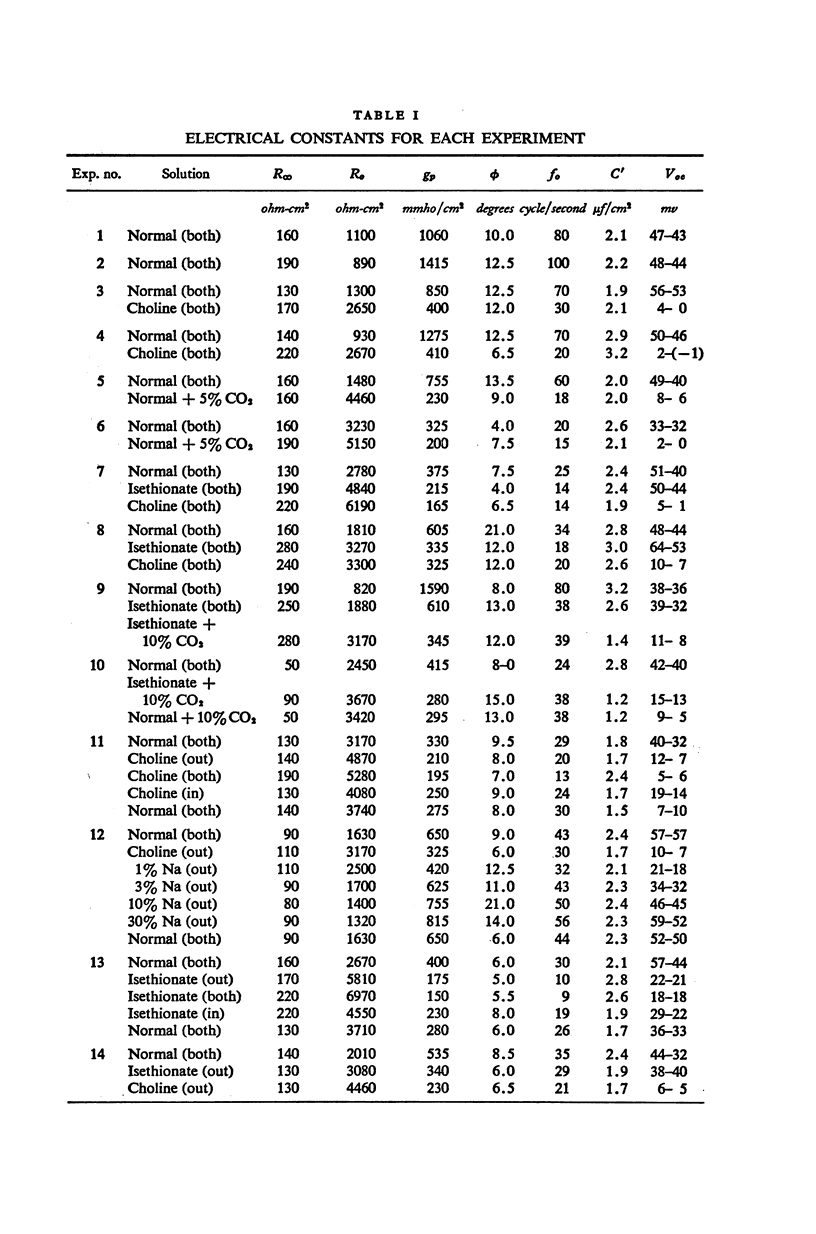

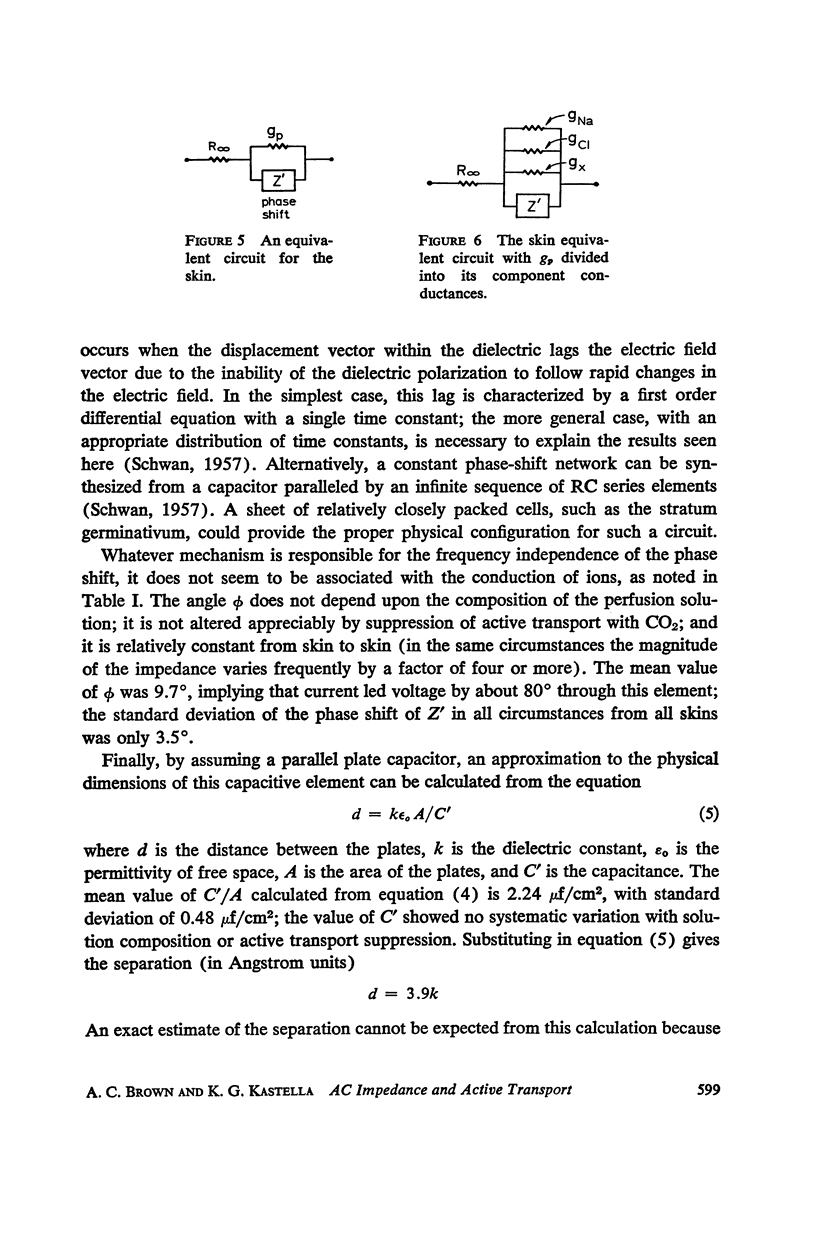
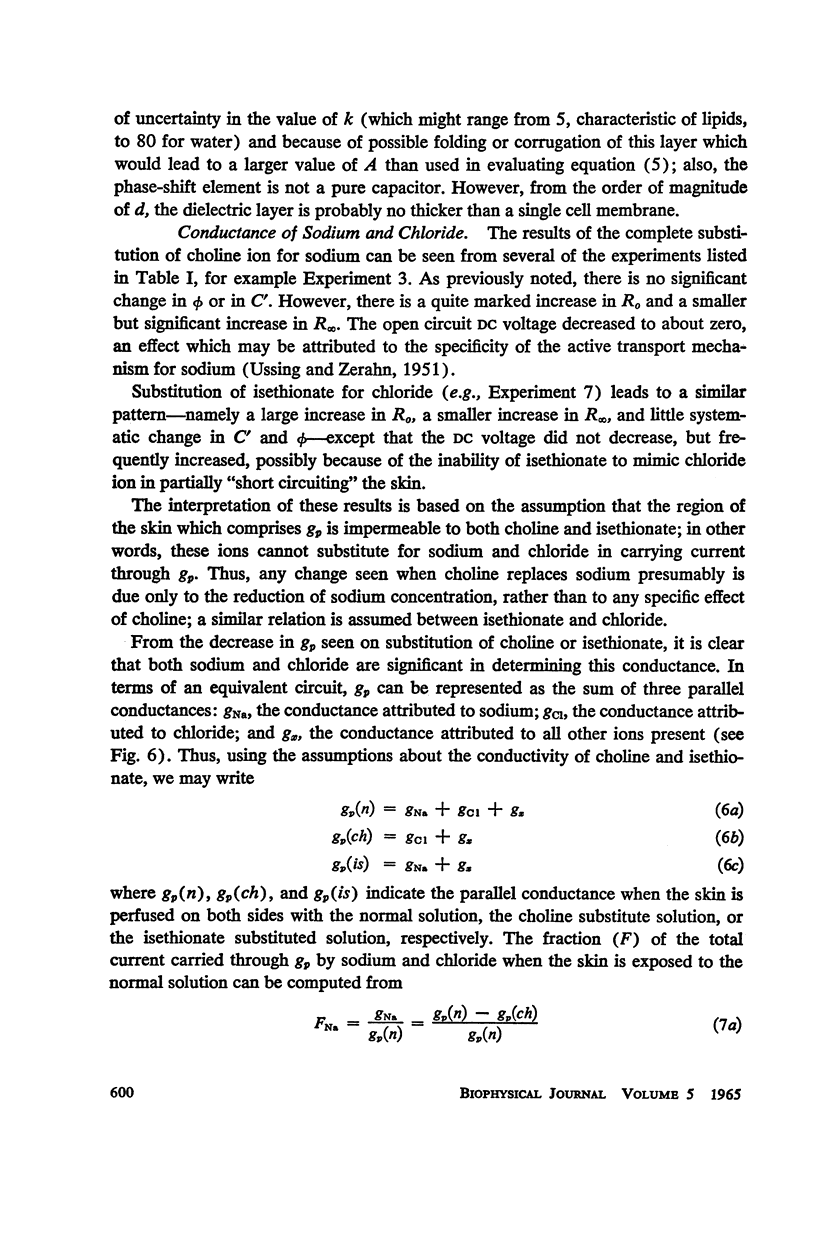
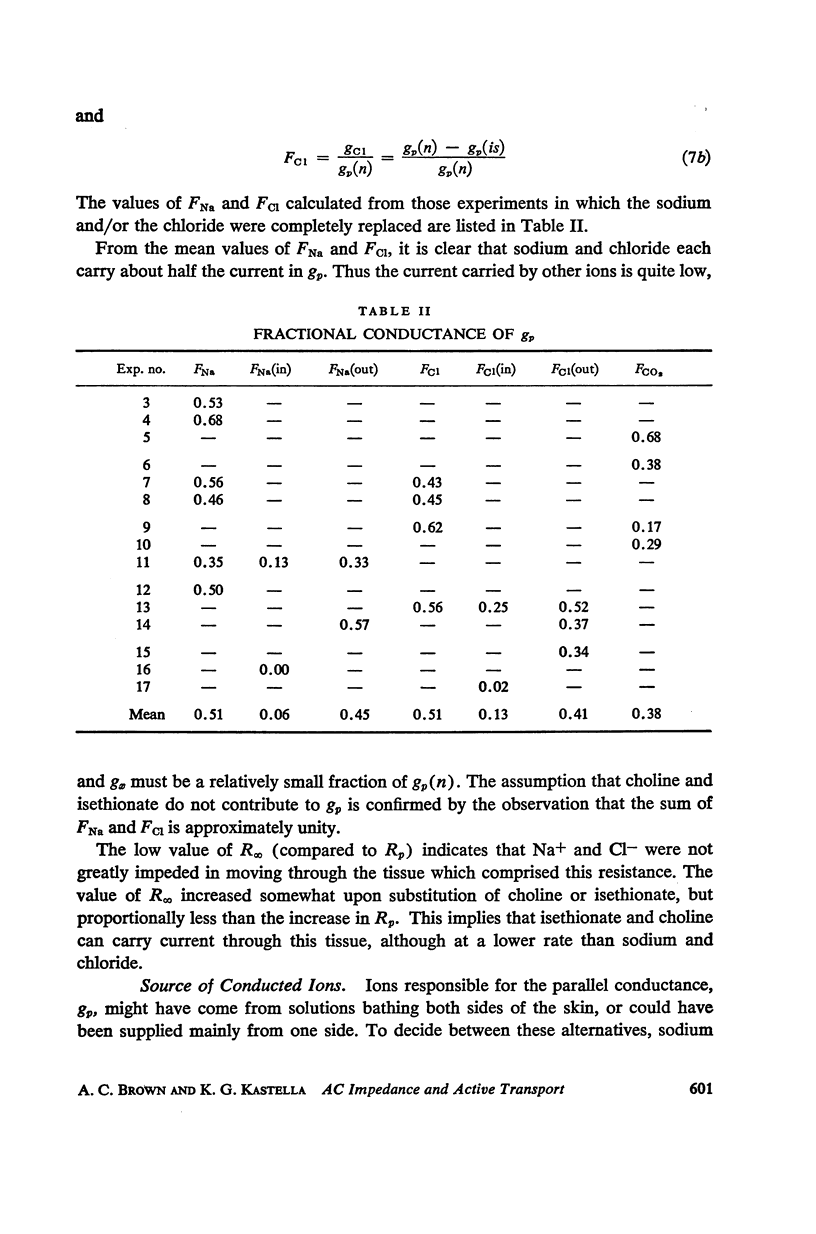
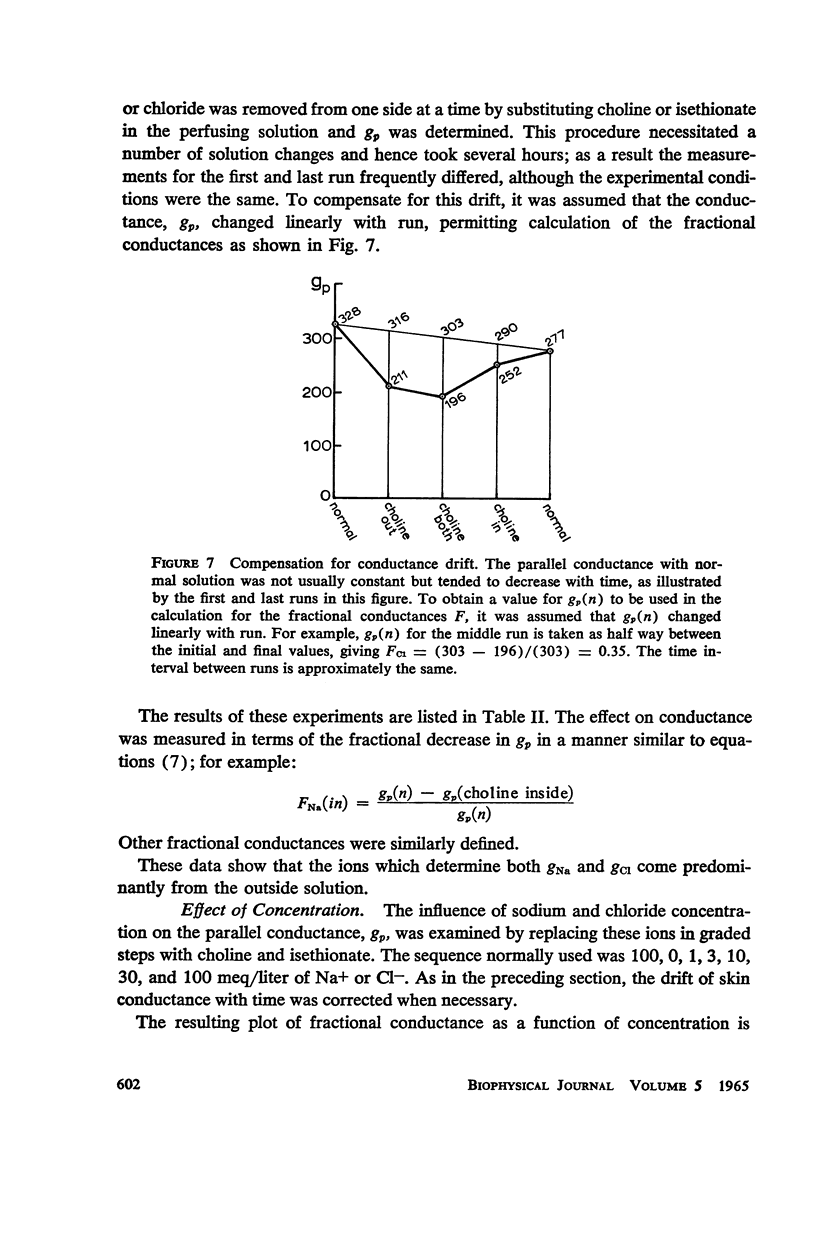
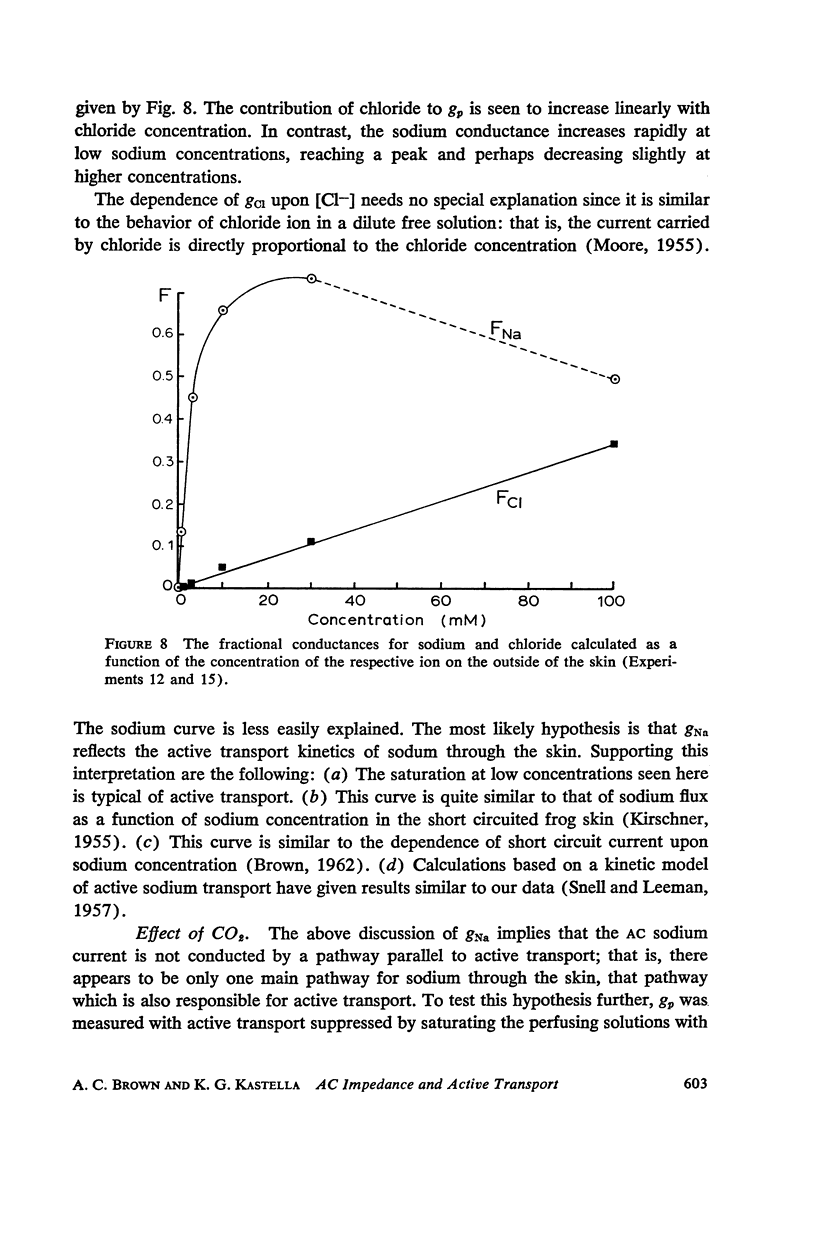
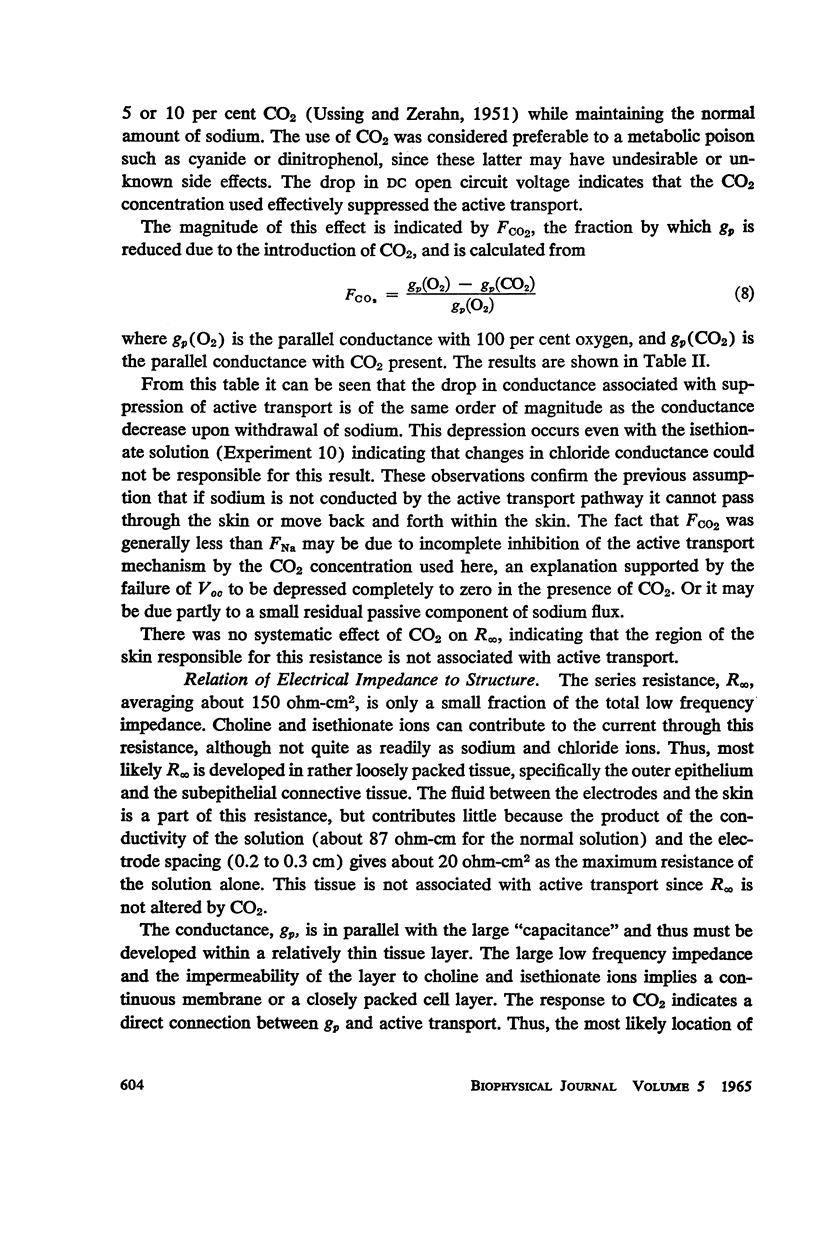

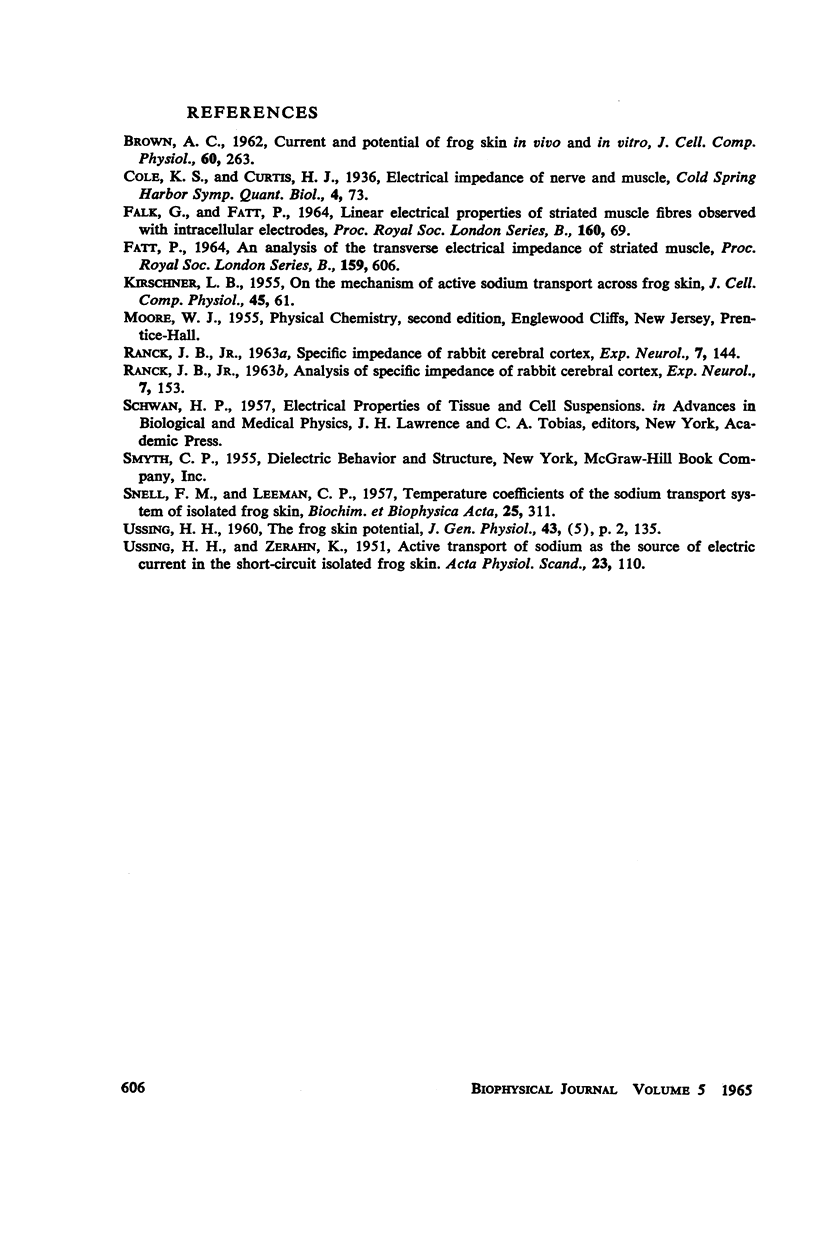
Selected References
These references are in PubMed. This may not be the complete list of references from this article.
- BROWN A. C. Current and potential of frog skin in vivo and in vitro. J Cell Comp Physiol. 1962 Dec;60:263–269. doi: 10.1002/jcp.1030600309. [DOI] [PubMed] [Google Scholar]
- KIRSCHNER L. B. On the mechanism of active sodium transport across the frog skin. J Cell Physiol. 1955 Feb;45(1):61–87. doi: 10.1002/jcp.1030450106. [DOI] [PubMed] [Google Scholar]
- RANCK J. B., Jr Analysis of specific impedance of rabbit cerebral cortex. Exp Neurol. 1963 Feb;7:153–174. doi: 10.1016/s0014-4886(63)80006-0. [DOI] [PubMed] [Google Scholar]
- RANCK J. B., Jr Specific impedance of rabbit cerebral cortex. Exp Neurol. 1963 Feb;7:144–152. doi: 10.1016/s0014-4886(63)80005-9. [DOI] [PubMed] [Google Scholar]
- SNELL F. M., LEEMAN C. P. Temperature coefficients of the sodium transport system of isolated frog skin. Biochim Biophys Acta. 1957 Aug;25(2):311–320. doi: 10.1016/0006-3002(57)90474-2. [DOI] [PubMed] [Google Scholar]
- USSING H. H. The frog skin potential. J Gen Physiol. 1960 May;43:135–147. doi: 10.1085/jgp.43.5.135. [DOI] [PMC free article] [PubMed] [Google Scholar]
- USSING H. H., ZERAHN K. Active transport of sodium as the source of electric current in the short-circuited isolated frog skin. Acta Physiol Scand. 1951 Aug 25;23(2-3):110–127. doi: 10.1111/j.1748-1716.1951.tb00800.x. [DOI] [PubMed] [Google Scholar]


